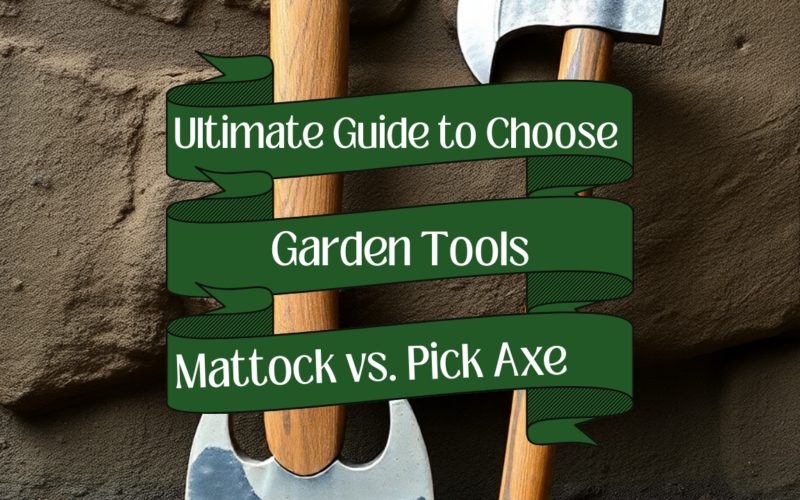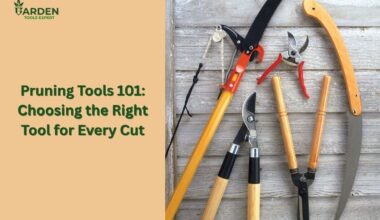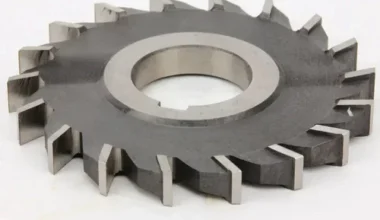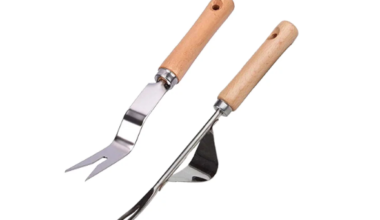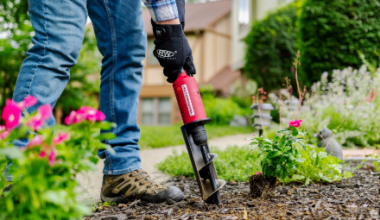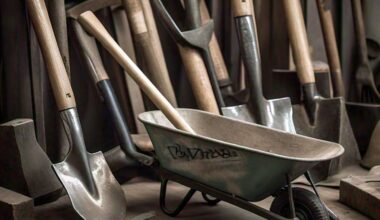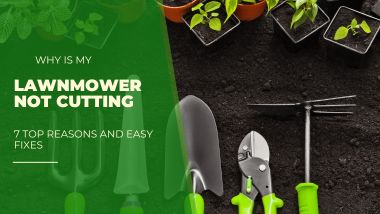In the realm of gardening, the choice of appropriate tools like the pick mattock can significantly impact the efficiency and efficacy of one’s efforts. Among the numerous gardening implements available, the Japanese mattock and the pickaxe are particularly noteworthy for their distinctive designs and functionalities.
Understanding These Garden Tools
Essential for outdoor maintenance, garden tools like the mattock and pickaxe offer specialized solutions for digging, soil loosening, and challenging terrain. Understanding their features enhances any gardening endeavor.
What is a Mattock?
A mattock is a versatile hand tool used primarily for digging and chopping in gardening and farming. A forged steel head typically features two distinct blades: one side for cutting and the other for digging or prying. Its design allows for efficient work in rocky soil and tough ground, proving advantageous when using a pick mattock.
What is a Pick Axe?
A pickaxe is a heavy-duty tool designed for breaking hard ground and digging. Featuring an axe blade and a pointed end, it effectively chops roots and breaks rocks, making it ideal for mining and construction.
Key Differences Between Mattock and Pickaxe
The key difference between a mattock and a pickaxe is their design and purpose. A mattock’s broad blade excels at digging and root cutting, while a pickaxe’s pointed end is specialized for breaking hard materials. This distinction makes each tool ideal for specific gardening tasks.
Features of the Japanese Mattock
The Japanese mattock, or “kama,” is renowned for its efficient design and lightweight construction. Its unique features make it an excellent choice for gardeners looking to skillfully tackle various tasks, from planting to weeding with a rake. Understanding these features can help you appreciate its value in the garden.
Design and Construction
The Japanese mattock is typically constructed with a fiberglass handle that absorbs shock, providing comfort during extended use. The forged steel head is designed for durability, ensuring that the tool can withstand heavy-duty tasks while remaining lightweight and easy to handle for efficient gardening.
Types of Mattocks: Cutter and Grub
There are two main types of mattocks: the cutter mattock and the grub mattock. The cutter mattock features a blade optimized for cutting, while the grub mattock is designed for digging and loosening soil. Each type serves a specific function, making them versatile tools for any gardener.
Benefits of Using a Mattock
Using a Japanese mattock offers numerous benefits, including its ability to efficiently chop roots, loosen soil, and adapt to various gardening tasks, much like a pulaski. Its user-friendly design reduces strain, making it an ideal choice for both amateur and professional gardeners looking to enhance their tool collection, including options like a hoe or rake.
Features of the Pickaxe
Design and Blade Structure
Pickaxe design prioritizes heavy-duty performance in demanding environments. Its robust steelhead integrates an axe blade for root cutting and a pointed end for breaking hard ground. This dual functionality enables efficient digging and prying, making it a versatile gardening tool like a hoe.
Common Uses for a Pickaxe
Commonly used in gardening, construction, and mining, the pickaxe is ideal for breaking rocky soil and digging openings for planting. Its effectiveness in loosening hard terrain allows gardeners to prepare the land for various activities, such as planting trees or shrubs, with the help of tools like a pulaski. This hand tool excels in situations where other garden tools might struggle, ensuring that gardeners can efficiently tackle even the toughest jobs.
Advantages of Choosing a Pickaxe
A pickaxe offers significant advantages, effortlessly tackling demanding tasks, especially when paired with a long handle for better leverage. Its axe blade and pointed end efficiently chop roots and penetrate hard ground. Ergonomic design minimizes user strain, ensuring comfort during prolonged use in gardens or on construction sites.
Choosing the Right Tool for Your Garden
Assessing Your Soil Type
Soil assessment is key before tool selection. Different soil types—like clay, sandy, or rocky—demand specific tools for effective gardening. For dense, rocky soil, a pickaxe excels at breaking ground. Understanding soil composition ensures efficient tool choice and gardening practices.
Determining the Task: Digging vs. Loosening Soil
Identifying whether your task involves digging a hole or merely loosening the soil with a pick mattock is essential in selecting the appropriate tool. A pickaxe is ideal for digging deep pits or breaking up compacted soil, while a mattock is better suited for loosening soil and cutting through roots. This distinction ensures that you utilize the best tool for the job, maximizing efficiency and minimizing effort.
Ergonomics and Handle Options
When choosing a tool, ergonomics plays a vital role in comfort and efficiency, especially with a long handle design. Opt for tools with shock-absorbing fiberglass handles that reduce strain during use. Additionally, consider the length of the handle; a longer handle can provide better leverage for digging, while a shorter handle may offer more control for precision tasks like using a hoe. Selecting the right handle type enhances your gardening experience significantly.
Maintenance and Care for Your Tools
To maximize the lifespan and performance of gardening tools like mattocks and pickaxes, prioritize proper maintenance. Regular cleaning, sharpening, and correct storage are essential. Investing in tool upkeep ensures efficiency and keeps these versatile tools ready for any task.
Cleaning and Storing Your Mattock and Pickaxe
Cleaning your equipment after each use is crucial to prevent rust and corrosion. A simple wipe with a damp cloth followed by thorough drying can keep the iron in excellent condition. Store these tools in a dry environment, preferably hanging on a wall or placed in a tool rack, to avoid damage and ensure easy access during gardening tasks.
Sharpening Techniques for Optimal Performance
Maintaining sharp mattock and pickaxe blades is crucial for efficient digging, particularly through roots or hard soil. Use a metal file or sharpening stone, focusing on the blade angle, to preserve a keen edge. Regular sharpening enhances performance and minimizes physical strain during gardening tasks.
When to Replace Your Tools
Timely tool replacement, including mattocks and pickaxes, saves time and effort. Signs like chipped blades or loose handles signal the need for replacement. Investing in high-quality, durable tools ensures optimal performance and longevity under demanding conditions.
Conclusion
Final Thoughts on Choosing the Right Tool
Success in gardening hinges on selecting the right tool. When choosing between a mattock and a pickaxe, consider soil type, intended tasks, and ergonomic design. Understanding each tool’s unique functions ensures an enhanced gardening experience and improved results.
Recommendations for Gardeners
For gardeners seeking to maximize tool efficiency, a mattock and a pickaxe are valuable investments. The mattock’s versatility and the pickaxe’s heavy-duty power enable effective handling of diverse ground tasks. Prioritize tools with ergonomic designs and durable steel blades for comfort and longevity.

